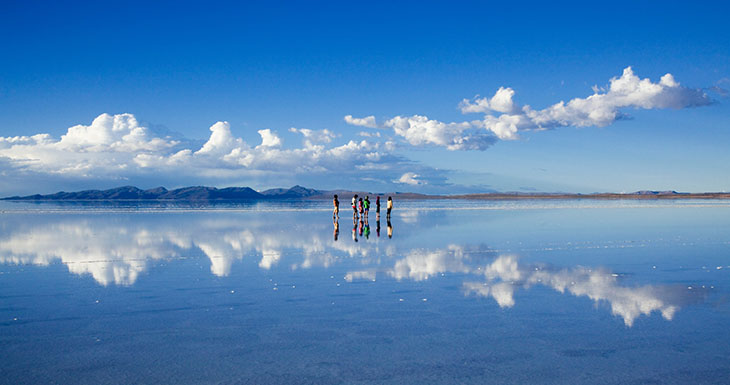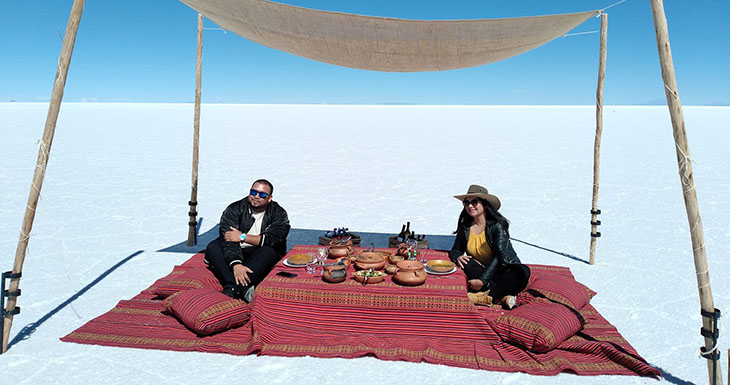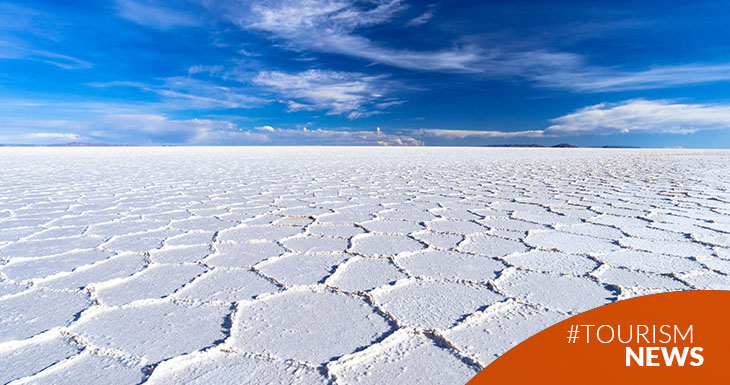Sometimes it is almost impossible to see the horizon in the Salar de Uyuni in southwestern Bolivia. The line that divides heaven from earth is barely discernible and it is difficult to tell what is real and what is a reflection. At 12,000 square kilometres, it is the world's largest salt desert and, at certain times of the year, the ground looks like a giant mirror.
Located in the Bolivian altiplano, in the Potosí region - at an altitude of 3,650 meters above sea level - it was formed as a product of prehistoric lakes that evaporated long ago, creating a crust of salt that extends towards the horizon, covered of polygonal salt patterns rising from the ground. It also contains very important minerals, such as boron, magnesium and sodium chloride, but above all lithium, with which batteries for computers, cell phones, televisions and various essential technological devices are manufactured today.
How to get to the Salar de Uyuni?
The easiest way to get there from Bolivia is by plane. There are several airlines that offer regular flights from La Paz and Sucre to Uyuni. Another way is by bus from La Paz or Sucre and then take a bus to Uyuni, however, this takes much longer (about 12 hours). Once in the Salar de Uyuni, the most common is to travel by tourist bus or private car.
What is the Mirror Effect due to?
In some areas and times of the year, the nearby lakes overflow and a thin layer of water transforms this plain into a beautiful reflection of the sky, which causes an amazing and dazzling mirror effect, which occurs as a natural phenomenon since the salt becomes waterproof and the water accumulates on the surface, creating this effect, for which the best time to visit is between March and April.

Experiences in the salt flat:
The sight of Thunupa (“red fire”, in the Uruchupai language) is impressive. This is its real name, although it became famous for adopting that of the nearest town, which can be reached by air or by land (by train or bus). Inside the salt flat are the Ojos de Sal, which are produced by natural phenomena caused by two mountains with fresh water currents, which when passing through the salt flat generate a PH shock. Visitors use them for hydrotherapy, to improve joints, due to the water minerals.
For "foodies", there is an unforgettable experience: the Apthapi. It is one of the highlands oldest traditions, which consists of offering to the community what each person produces with their hands. It is a community meal, and on certain dates each one brings what they have harvested, to thank the community and Pachamama.

A novelty in development is the open-air park of Salt Sculptures, made by the original cooperatives and which can be visited through some tours to view their work.
It is also possible to live the experience of staying in a hotel built in salt: it is something that is so attractive that travelers from all over the world, especially from Asia, come to Uyuni to enjoy the salt flats and sleep in rooms with salt domes,enjoy Salt therapy and traditional Bolivian gastronomy.
"More than the first salt hotel in the world, we are Palacio de Sal", presents this hotel venture that has been located on the shores of the Salar de Uyuni since 2004.
A piece of advice for those who are planning to visit Uyuni: the sun is strong in the Bolivian Altiplano, so you must bring sunscreen, lip balm, sunglasses, a hat or cap, closed shoes that do not slip, suitable for walking, bathing suit and a towel for the hot springs, as well as warm clothes since when the sun disappears the temperature drops a lot.
And a piece of information that is worth knowing - because the cell phone is essential when it comes to taking memories of that white wonder of Uyuni - is that the battery runs out very quickly because the salt absorbs the energy. Something similar happens with the people who enter the place and leave renewed: the white giant absorbs all the bad energy, and it is one of the most spectacular destinations in all of South America.


